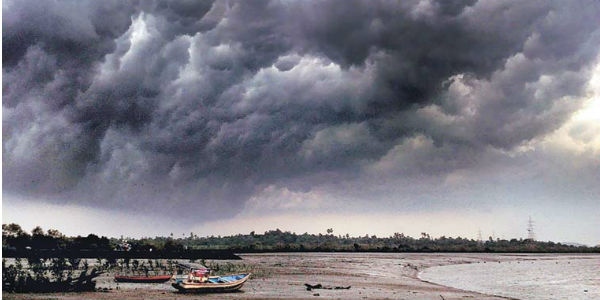 Equatorial sea surface temperatures (SSTs) continued to be positive across most of the Pacific Ocean. In fact, the most recent Oceanic Nino Index (ONI) figure i.e. for OND (October-November-December) stands at 0.9°C.El Niño conditions are declaredwhen the ONI which is three months running mean of SSTs anomaly in the Nino 3.4 region, is more than or equal to 0.5°C for overlapping 3 months for five consecutive episodes.
Equatorial sea surface temperatures (SSTs) continued to be positive across most of the Pacific Ocean. In fact, the most recent Oceanic Nino Index (ONI) figure i.e. for OND (October-November-December) stands at 0.9°C.El Niño conditions are declaredwhen the ONI which is three months running mean of SSTs anomaly in the Nino 3.4 region, is more than or equal to 0.5°C for overlapping 3 months for five consecutive episodes.
The average value of oceanic Niño Index (ONI) taken over a period of three months for the last four consecutive episodes are as follows:
 However, since December, equatorial SSTs have been witnessing weakening trend. This means the magnitude has decreased, which indicates that peak is over and El Niño probabilities should now decline. Here’s a look at the recent Nino Index (in °C):
However, since December, equatorial SSTs have been witnessing weakening trend. This means the magnitude has decreased, which indicates that peak is over and El Niño probabilities should now decline. Here’s a look at the recent Nino Index (in °C):
 With this, there are 60% probability ofEl Niño conditionsto form and continue through the Northern Hemisphere spring 2019. By the time Southwest Monsoon 2019 arrives, El Niño probability would be less than 50% and ENSO neutral conditions would also increase.
With this, there are 60% probability ofEl Niño conditionsto form and continue through the Northern Hemisphere spring 2019. By the time Southwest Monsoon 2019 arrives, El Niño probability would be less than 50% and ENSO neutral conditions would also increase.
The four-month long Southwest Monsoon seasons hold great relevance for India, as it caters to 75% of the annual rainfall of the country. El Niño has the power corrupt the Monsoon and is invariably related to below normal Monsoon rains.
Image Credit:en.wikipedia.org
Any information taken from here should be credited to skymetweather.com




